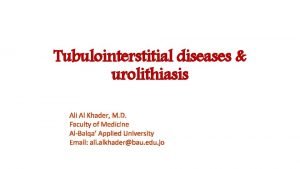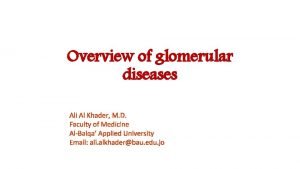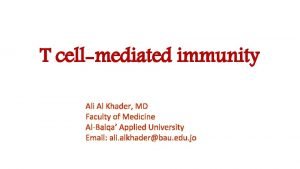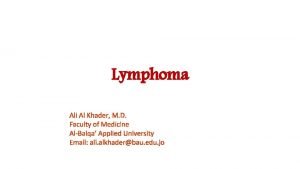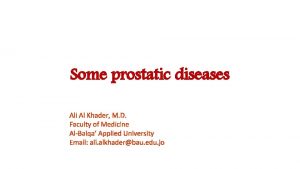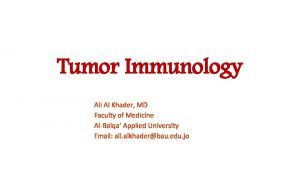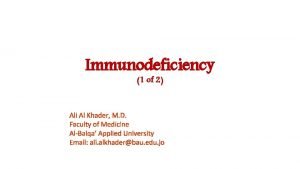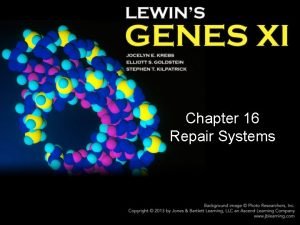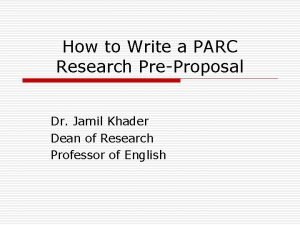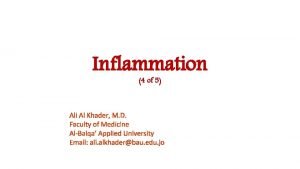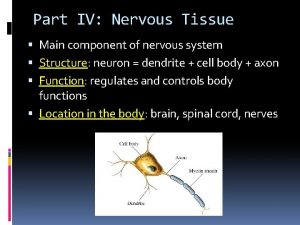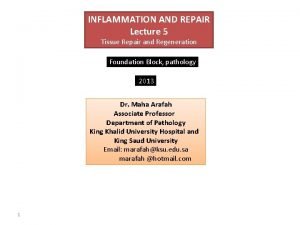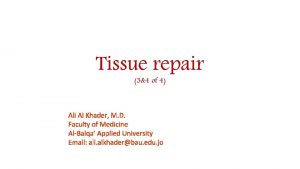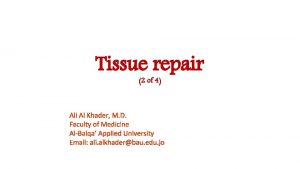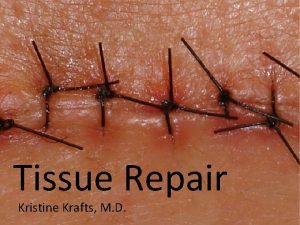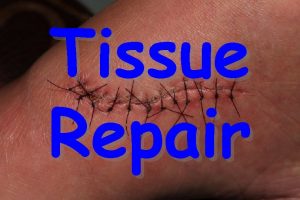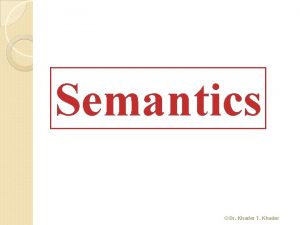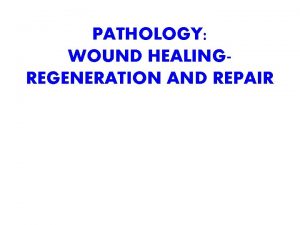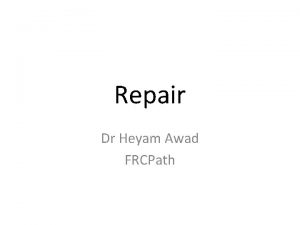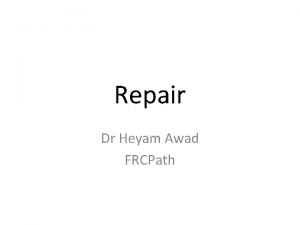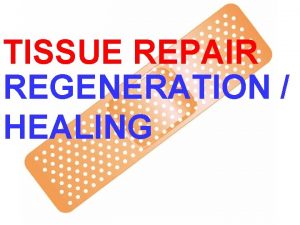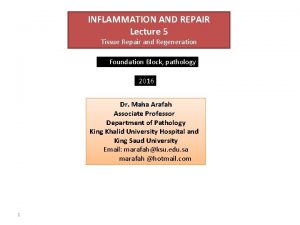Tissue repair 1 of 4 Ali Al Khader
















- Slides: 16

Tissue repair (1 of 4) Ali Al Khader, M. D. Faculty of Medicine Al-Balqa’ Applied University Email: ali. alkhader@bau. edu. jo

What will we discuss today? • General principles of cell proliferation • Stem cells

Cell number determinants Robbins basic pathology 9 th edition

Cells that proliferate in repair • Tissue remnants • Endothelial cells • fibroblasts Depending on polypeptide growth factors

The cell cycle Non-dividing cells are in cycle arrest in G 1 phase or exited the cycle (G 0) GFs, cyclins and cyclin-dependent kinases…cell cycle progression

Different proliferative capacities of tissues • Labile tissues…continuously dividing …continuous loss and replacement (renewal) • Stable tissues…quiescent with only minimal replicative activity …capable to proliferate in response to injury or decrease in tissue mass…minimal capability in general (except …. ) …parenchyma of most solid organs …endothelial cells, fibroblasts, and smooth muscle cells especially in wound healing

Different proliferative capacities of tissues, cont’d • Permanent tissues…non-proliferative …repair is dominated by fibrosis (scarring) …cardiac muscle, neurons and skeletal muscle …what are satellite cells?

Stem cells • 2 important properties: -self renewal capacity -asymmetric replication when a stem cell divides, one daughter cell enters a differentiation pathway and gives rise to mature cells, while the other remains an undifferentiated stem cell that retains its self-renewal capacity

2 major types of stem cells • Embryonic stem cells (ES cells) …the most undifferentiated …present in inner cell mass of the blastocyst …extensive renewal capacity be induced into any of the 3 germ cell layers …can be maintained in culture. Canfor overtoadifferentiate year without differentiation

2 major types of stem cells, cont’d • Adult stem cells… = tissue stem cells …less undifferentiated …within organs/tissues …restricted lineage potential

Stem cells, cont’d • They need special niches (stem cell niches) …examples of stem cell niches: -brain: subventricular zone & dentate gyrus -skin: -basal layer -bulge region of hair follicle -cornea: limbus

Stem cell niches Robbins and Cotran pathologic basis of disease 9 th edition

Experiments • Hematopoietic stem cells are the most studied …taken from bone marrow or from blood Needs mobilization by the administration of granulocyte colony stimulating factor (G-CSF) …used for treating leukemia and lymphoma What is regenerative medicine?

Experiments, continued • ES cells: …from blastocyst (usually by in vitro fertilization) …rejection is a problem (tissue incompatibility due to HLA molecules on donor cells) To solve the problem Introduction of genes into fully differentiated cells, such as fibroblasts or skin epithelial cells from the patient reprogramming of the somatic cell nucleus the cells acquire many of the properties of ES cells …the new cells are called induced pluripotent stem cells (i. PS cells)

Robbins basic pathology 9 th edition

Thank You
 Ali al khader
Ali al khader Ali al khader
Ali al khader Ali al khader
Ali al khader Ali al khader
Ali al khader Ali al khader
Ali al khader Ali al khader
Ali al khader Ali al khader
Ali al khader Base excision repair vs mismatch repair
Base excision repair vs mismatch repair Base excision repair vs mismatch repair
Base excision repair vs mismatch repair Jamil khader
Jamil khader Jamil khader
Jamil khader Al khader proteins
Al khader proteins Nervous tissue repair
Nervous tissue repair Healing by first intention
Healing by first intention Perforation plates
Perforation plates Gulliver garage doors
Gulliver garage doors Sefpro repair services
Sefpro repair services
